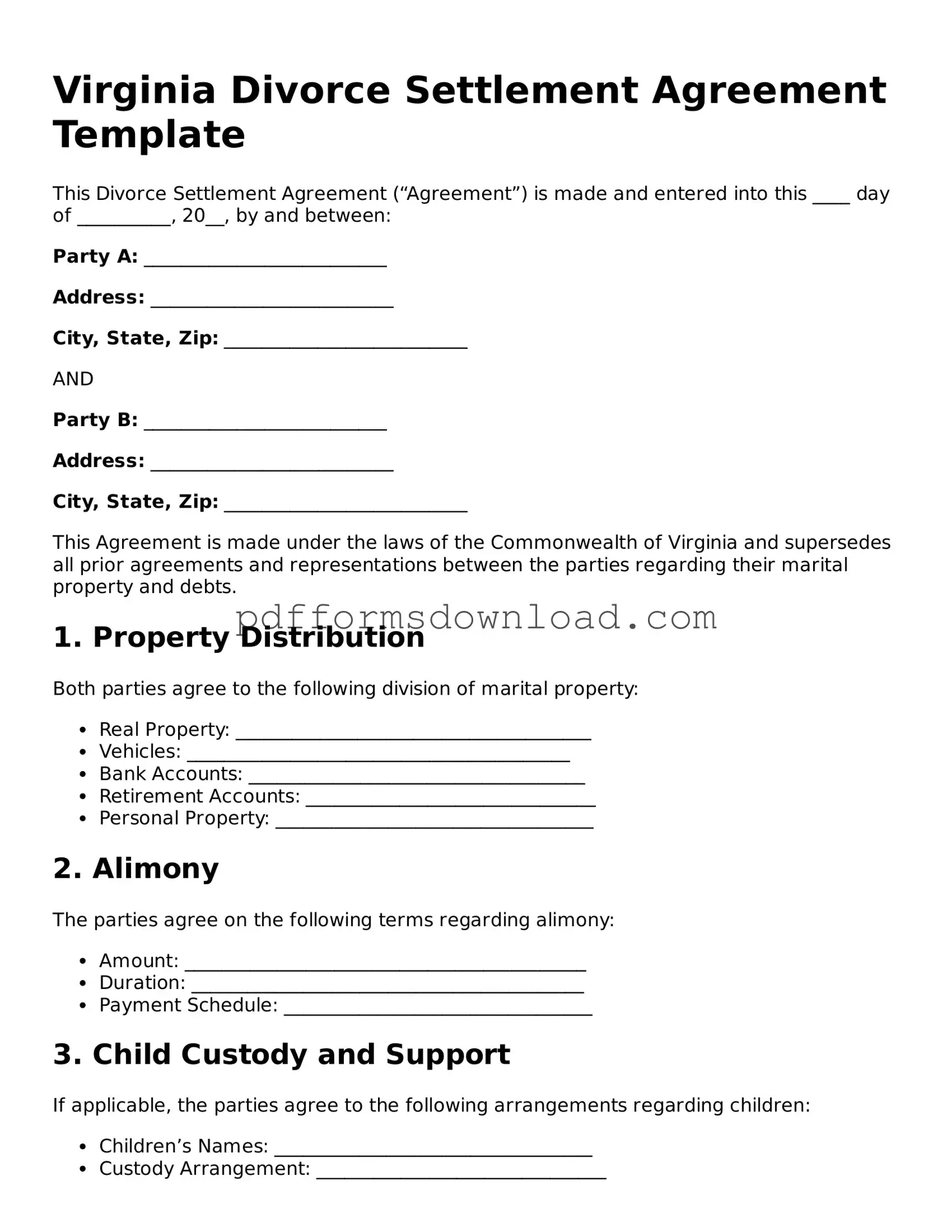What is a Virginia Divorce Settlement Agreement?
A Virginia Divorce Settlement Agreement is a legal document that outlines the terms and conditions agreed upon by both spouses regarding the division of assets, debts, child custody, and support during a divorce. It serves as a comprehensive plan for how the couple will handle their affairs post-divorce, ensuring clarity and reducing potential disputes in the future.
Who needs a Divorce Settlement Agreement?
Any couple seeking a divorce in Virginia should consider creating a Divorce Settlement Agreement. This document is particularly important for those with shared assets, children, or debts. It helps both parties understand their rights and responsibilities, making the divorce process smoother and more organized.
How do I create a Divorce Settlement Agreement?
To create a Divorce Settlement Agreement, both parties should communicate openly about their needs and expectations. It is often beneficial to list all assets, debts, and any child-related arrangements. While some couples choose to draft the agreement themselves, consulting with a lawyer can ensure that the document complies with Virginia laws and adequately protects both parties' interests.
Is a Divorce Settlement Agreement legally binding?
Yes, once signed by both parties and approved by the court, a Divorce Settlement Agreement becomes legally binding. This means that both spouses are obligated to adhere to the terms outlined in the document. If one party fails to comply, the other can seek enforcement through the court.
What happens if we cannot agree on the terms?
If both parties cannot reach an agreement, they may need to consider mediation or legal intervention. Mediation involves a neutral third party who helps facilitate discussions and negotiations. If mediation fails, the case may go to court, where a judge will make decisions regarding asset division, custody, and support.
Can a Divorce Settlement Agreement be modified?
Yes, a Divorce Settlement Agreement can be modified, but only under certain circumstances. If there is a significant change in circumstances, such as a job loss or a change in income, either party can request a modification. However, the modification must be approved by the court to become effective.
How long does it take to finalize a Divorce Settlement Agreement?
The time it takes to finalize a Divorce Settlement Agreement varies based on the complexity of the case and how quickly both parties can reach an agreement. If both spouses are cooperative, the process can be completed in a few weeks. However, if disputes arise, it may take several months or longer to resolve all issues.
Where can I find a Divorce Settlement Agreement form?
Divorce Settlement Agreement forms can often be found on the Virginia state court website or through local family law attorneys. Many legal aid organizations also provide templates and guidance for those who may need assistance in preparing the document. It's important to ensure that any form used complies with Virginia laws.
